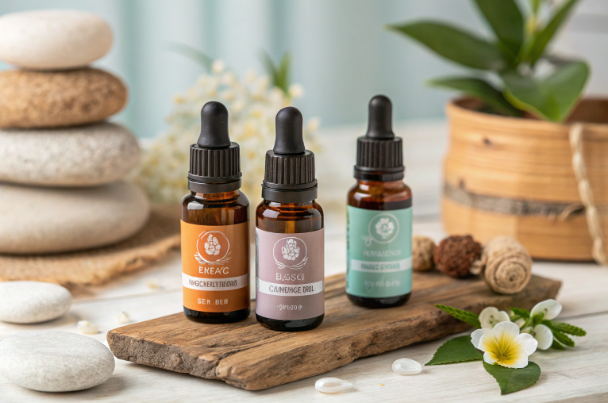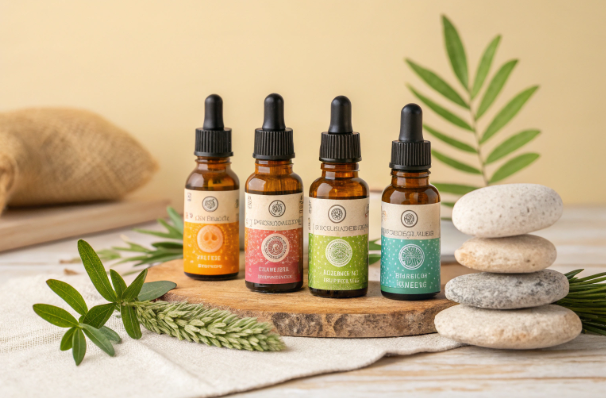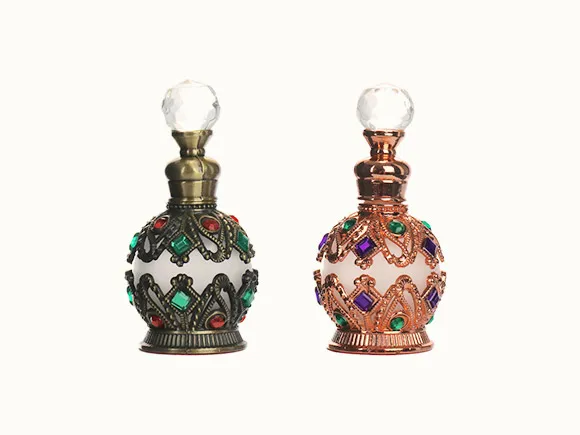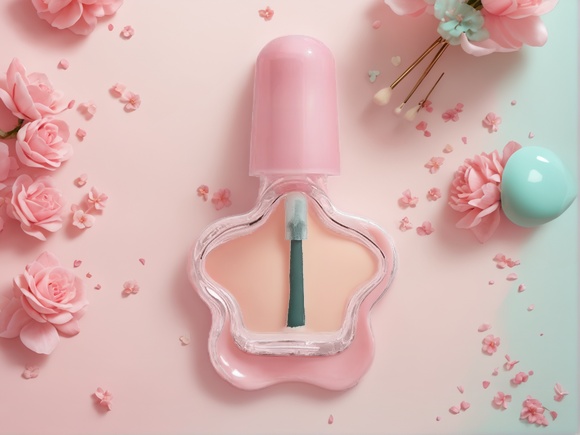Essential oils have become increasingly popular worldwide for their therapeutic properties, aromatherapy uses, and incorporation into cosmetic products. However, with this growth comes the critical need for accurate and compliant labeling to ensure consumer safety, regulatory adherence, and brand credibility. Two of the most influential regulatory bodies governing essential oil labeling are the U.S. Food and Drug Administration (FDA) and the European Union (EU). Each has distinct requirements that essential oil brands must understand and implement to successfully market their products in these regions.
This article provides a comprehensive comparison ofessential oil bottlelabeling laws under FDA and EU standards, detailing mandatory elements, regulatory nuances, and best practices. We also highlight howwww.paupacking.comsupports brands with compliant, high-quality essential oil bottles and packaging solutions tailored to meet these regulations.


Why Labeling Compliance Is Crucial for Essential Oils
Labeling is the primary communication channel between brands and consumers. It conveys important information such as product identity, ingredients, usage instructions, warnings, and manufacturer details. Proper labeling ensures:
-
Regulatory Compliance:Avoids fines, product recalls, and legal actions.
-
Consumer Safety:Provides necessary warnings and usage guidance.
-
Brand Trust:Enhances transparency and consumer confidence.
-
Market Access:Meets country-specific import and retail requirements.
FDA Labeling Requirements for Essential Oils
The FDA regulates essential oils depending on their intended use, classifying them as cosmetics, drugs, or both. Labeling requirements vary accordingly.
Mandatory Label Elements Under FDA
| Label Element | Requirement Details | Notes |
|---|---|---|
| Product Identity | Clear statement of product name and type | Example: “Lavender Essential Oil” |
| Net Quantity | Volume or weight in metric and customary units | Fluid ounces (fl oz) and milliliters (ml) |
| Manufacturer Info | Name and place of business (manufacturer, packer, distributor) | Address or city and state must be included |
| Ingredient List | Required for cosmetic essential oils | Listed in descending order of predominance |
| Warning Statements | Required if product poses hazards | E.g., “Keep out of reach of children” |
| Claims | Must be truthful and not imply unapproved drug use | Therapeutic claims require FDA drug approval |
| Batch/Lot Number | Recommended for traceability | Supports recalls and quality control |
| Expiration Date | Optional but recommended | Indicates product shelf life |
| Label Format | Legibility with minimum font sizes | FDA recommends minimum 6pt font for warnings and ingredients |
FDA Classification Impact on Labeling
-
Cosmetic Products:Labels must include identity, net contents, ingredients, warnings, and manufacturer info. No pre-market approval is required.
-
Drug Products:If claims imply disease treatment or prevention, the product is regulated as a drug, requiring FDA approval and additional labeling including active ingredients and directions for use.
-
Dual-Use Products:Products making both cosmetic and drug claims must comply with both sets of requirements.
Additional FDA Labeling Guidelines
-
Avoid unsubstantiated therapeutic claims to prevent drug classification.
-
Include extraction method and recommended use for clarity and marketing benefits.
-
Use standardized botanical names (INCI) for ingredients to avoid ambiguity.
-
Ensure label content matches product formulation and marketing materials.


EU Essential Oil Labeling Requirements
In the European Union, essential oils are regulated primarily under the Cosmetics Regulation (EC) No 1223/2009, which emphasizes consumer safety, ingredient transparency, and truthful claims.
Mandatory Label Elements Under EU Regulation
| Label Element | Requirement Details | Notes |
|---|---|---|
| Product Name | Clear and non-misleading product identification | Must reflect product use |
| Nominal Content | Quantity at time of packaging in metric units | Milliliters (ml) or grams (g) |
| Manufacturer/Importer | Name and address within the EU | Responsible for compliance |
| Ingredients List | Full INCI list including fragrance components | Allergens must be disclosed if above thresholds |
| Batch Number | Mandatory for traceability | Enables identification of production batch |
| Expiry Date or PAO | Expiry date or Period After Opening symbol | PAO indicates safe use period after opening |
| Warnings and Precautions | Required if applicable | E.g., “Avoid contact with eyes” |
| Claims | Must comply with EU Cosmetic Claims Regulation | Claims must be truthful, substantiated, and non-misleading |
| Language | Labeling in official language(s) of member state | Ensures consumer comprehension |
Additional EU Regulatory Considerations
-
Cosmetic Product Safety Report (CPSR):Mandatory safety assessment before marketing.
-
Restricted Substances:Certain allergens and chemicals are restricted or banned; labels must disclose allergens above specified limits.
-
Cosmetic Product Notification Portal (CPNP):Products must be registered before sale.
-
Claims Control:Strict monitoring to prevent misleading advertising.
Table: FDA vs. EU Essential Oil Labeling Comparison
| Labeling Aspect | FDA Requirements | EU Requirements |
|---|---|---|
| Product Identity | Required, clear product name | Required, clear product name |
| Net Quantity | Must state volume/weight | Must state nominal content |
| Manufacturer Info | Name and address required | Name and EU address required |
| Ingredient Listing | Required for cosmetics, drug ingredients listed separately | Full INCI list mandatory |
| Warning Statements | Required if applicable | Required if applicable |
| Claims | Must not imply drug use without approval | Must comply with Cosmetic Claims Regulation |
| Batch Number | Recommended, important for recalls | Mandatory |
| Expiry Date/PAO | Optional but recommended | Expiry date or PAO symbol mandatory |
| Language | English or market-specific | Official language(s) of member state |
| Regulatory Body | FDA | European Commission and member state authorities |
Challenges and Best Practices in Labeling Compliance
Common Challenges
-
Differentiating between cosmetic and drug claims to avoid misclassification.
-
Ensuring ingredient lists are accurate, complete, and use standardized nomenclature.
-
Incorporating mandatory warnings and allergen disclosures without cluttering the label.
-
Meeting multilingual labeling requirements in the EU.
-
Keeping up with evolving regulations and enforcement trends.
Best Practices
-
Work with regulatory experts to classify your product correctly.
-
Use INCI names for all ingredients and disclose allergens per EU thresholds.
-
Include clear, concise warnings and usage instructions.
-
Design labels with legible fonts, proper contrast, and sufficient space.
-
Maintain batch and lot number traceability for quality control.
-
Partner with packaging suppliers likewww.paupacking.comwho understand compliance needs and offer customizable, regulatory-ready packaging solutions.
Howwww.paupacking.comSupports Essential Oil Labeling Compliance
www.paupacking.comis a leading provider ofessential oil bottlesand packaging solutions designed to meet both FDA and EU labeling standards. Their offerings include:
-
Pre-formatted label templatesthat comply with font size, ingredient listing, and warning requirements.
-
Customizable packagingthat provides ample label space, ensuring all mandatory information is visible and legible.
-
Child-resistant closuresto meet enhanced safety regulations for concentrated oils.
-
Material safety documentationand MSDS support for regulatory filings.
-
Expert consultationon labeling, claims, and packaging design to minimize compliance risks.
By partnering withwww.paupacking.com, brands can streamline compliance, reduce time-to-market, and enhance consumer trust through professional, regulation-aligned packaging.
Conclusion
Navigatingessential oil bottlelabeling laws requires a thorough understanding of both FDA and EU regulatory frameworks. While both emphasize consumer safety, ingredient transparency, and truthful claims, the specifics of ingredient listing, allergen disclosure, and language requirements differ significantly. Brands must carefully tailor their labels to meet the demands of each market to avoid costly penalties and build consumer confidence.
www.paupacking.comoffers comprehensive packaging and labeling solutions designed to help essential oil brands comply with these complex regulations effortlessly. From child-resistant closures to pre-formatted label templates and high-quality bottles, their expertise supports brands in delivering safe, compliant, and attractive essential oil products worldwide.
By prioritizing regulatory compliance and partnering with experienced suppliers likewww.paupacking.com, essential oil brands can confidently expand their market reach while safeguarding their reputation and consumer safety.











